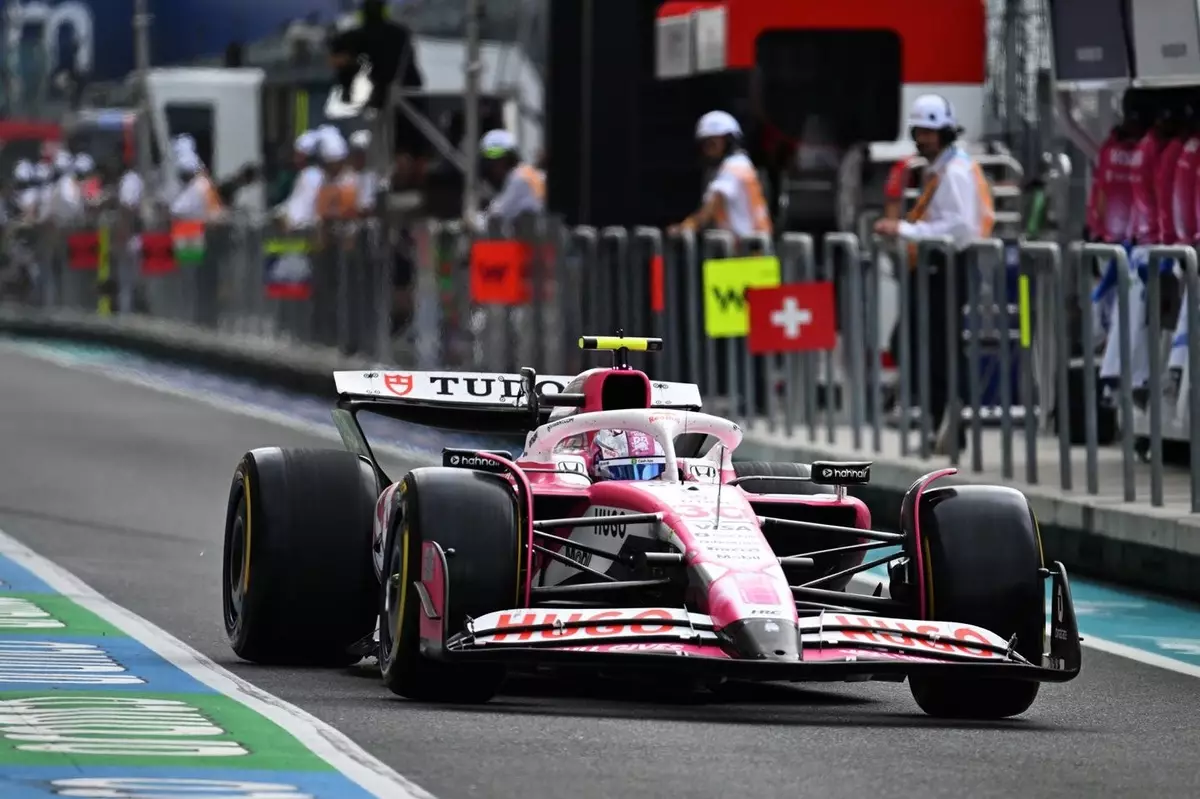The Racing Bulls Formula 1 team is gearing up for the Emilia-Romagna Grand Prix with a noteworthy upgrade package, yet the anticipated impact may not resonate as profoundly as one might hope. This marks the team’s initial significant enhancement of the 2025 season, with a new floor and bodywork designed meticulously up to the final moment before the cars were transported from their base in Faenza to Imola. Despite the upgrade’s apparent magnitude, team principal Laurent Mekies has adopted a prudent approach, prioritizing a cautious development strategy. Past experiences have led to this recalibration in expectations; after all, the danger of unintended regression looms large in high-stakes racing.
Lessons from the Past
The team’s hesitance is rooted deep in the echoes of previous missteps. The 2025 season began with unfulfilled promises and performance stagnation. A significant upgrade during the previous season’s Spanish Grand Prix inadvertently delivered diminished results, leaving fans and team members alike scrambling for consistency. Mekies candidly acknowledges, “We have learned the hard way last year that these cars are very easy to break in terms of development.” This wisdom highlights that while innovation is critical, it must be weighed against the fragile nature of aerodynamic efficiency and vehicle dynamics—one miscalculated tweak could lead to detrimental performance consequences.
As the squad prepares to implement their upgrade, the focus is on data-driven decisions, taking measured steps, which Mekies articulately frames as a necessity: “Going step by step is the only way you are going to have some sort of confidence that you are not breaking everything.” This philosophy may juggle well within the confines of the current rules cycle, ensuring that while gains might be modest, they could be pivotal in a fiercely competitive midfield.
The Nuances of Midfield Competitiveness
In 2025, the midfield competition is tighter than ever; the difference between a P12 and a P6 in qualifying can often hinge on mere tenths of a second. For Racing Bulls, this means that even the smallest increments in performance can prove to be the difference between a successful weekend and a frustrating outing. Their recent performance has showcased this volatility, with the team securing substantial points in earlier races but stagnating thereafter, grappling with inconsistent outcomes.
Mekies does not shy away from this reality, noting that while large leaps in upgrades may not be feasible in this late stage of development, progress is still imperative. “It’s all small steps,” he asserts, alluding to the necessity of continuous development without jeopardizing reliability. The team’s mindset emphasizes resilience and a desire to extract maximum potential from each small upgrade.
Future Directions and Strategic Decisions
Looking ahead, the Barcelona Grand Prix, set for June 1, looms as a pivotal race for Racing Bulls. Results from this event will serve as a litmus test, allowing the team to evaluate not only the outcomes of their strategies but also the viability of further investments into the current car concept. Mekies aptly highlights the balancing act at play. “We will regroup after Barcelona, assess where our performance is, and try to balance that versus the rate of improvement for 2026.”
These upcoming decisions will not only reflect the current season’s performance but will also steer the development focus towards 2026. As regulations evolve and competition intensifies, the ability to pivot and adapt will define Racing Bulls’ trajectory in the fast-paced arena of Formula 1.
The Thrill of Controlled Risk
This careful navigation of incremental upgrades framed within a broader strategy showcases the essence of racing: a thrilling dance on the edge of innovation and risk. Racing Bulls must embrace the hustle of the sport while remaining vigilant against its inherent unpredictability. Their approach illustrates that in motorsport, sometimes restraint can be as impactful as rapid advancement—each small step taken presents an opportunity of its own, contributing to a larger narrative of resilience and adaptability in one of the most competitive leagues in the world.


Leave a Reply